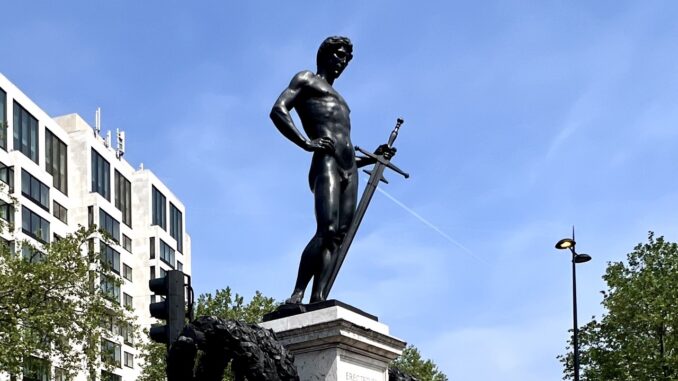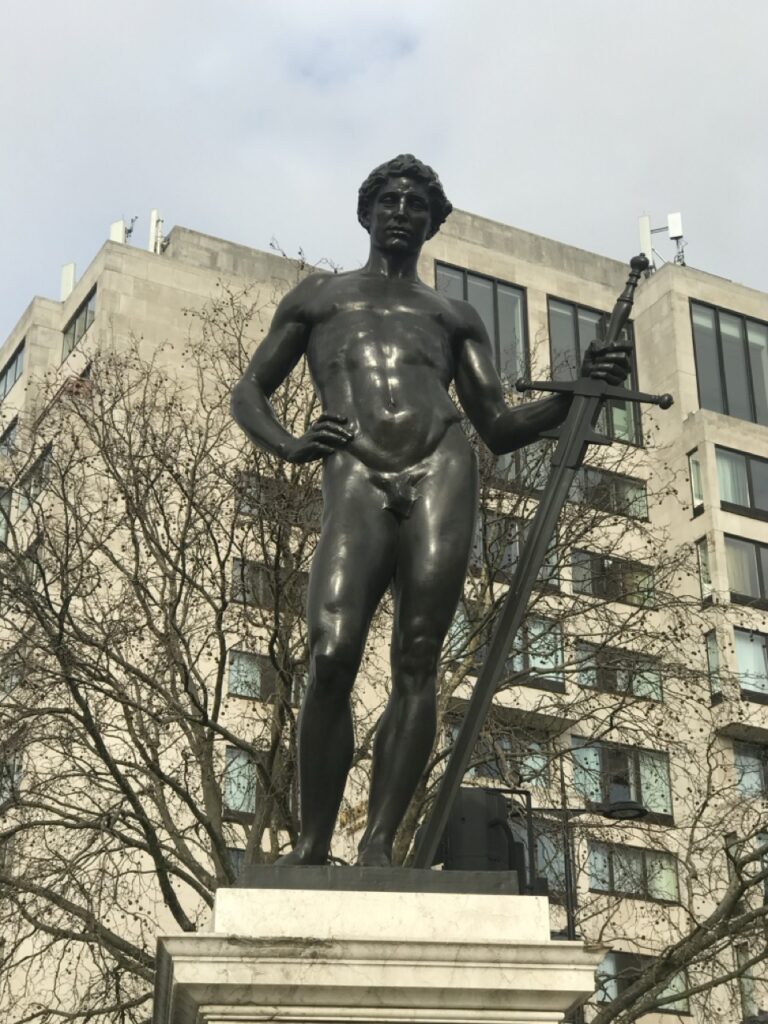
Saul has slain his thousands, but David his tens of thousands
The inscription above, which is on the memorial to the Machine Gun Corps at Wellington Place, opposite Apsley House, is perhaps the most chilling of any written on a London monument.
It goes to the heart of the slaughter of WW1, when infantrymen charged (or walked) through no man’s land towards the enemy’s positions. They were hoping that the artillery had destroyed the opposing force’s resistance, but too often these men were simply mown down as they made their way forward.


But machine gunners were themselves obvious targets. So much so that in its short existence (1915-1922) the Machine Gun Corps had a casualty rate of over 30% and the nickname ‘the suicide club’.
The memorial is a 9′ bronze statue by the artist Francis Derwent Wood of a nude David who stands with a sword on a marble column. This column is flanked by plinths on which are bronze models of Vickers machine guns adorned with laurel wreaths.
This contrast – the weapons of war against the perfect male nude – is unsettling and was controversial from its unveiling in 1925, with many feeling that the meorial was some sort of glorification of war. The truth is quite possibly the complete opposite.
Derwent Wood, although in his 40s, had enlisted as an orderly in the Royal Army Medical Corps in 1915, and had first hand experience of the horrors of industrial warfare and its effects on the fragile human form.
This experience led him to open a special clinic, the ‘Masks for Facial Disfigurement’ in Wandsworth. Here they made masks of thin sculpted metal that could be worn by wounded to hide their terrible facial injuries. (It was known colloquially as the ‘Tin Nose Shop’.)
The masks were painted to try to exactly match the skin tones of the wearer, with the aim to restore the self-confidence of those who had ahd devastating facial wounds.
